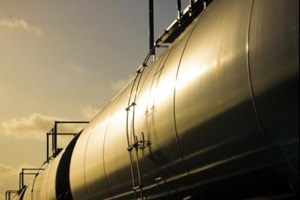Alberta expects $1.7 billion profit from crude-by-rail operation
CALGARY (Bloomberg) -- Alberta is preparing a giant crude-by-rail operation to help its oil-sands producers cope with a pipeline crunch, and it expects a big profit from the venture.
The Canadian province, which holds the world’s third-largest crude reserves, plans to net $1.7 billion (C$2.2 billion) after investing $2.8 billion (C$3.7 billion) to lease tank cars and buy service from rail providers, generating$4.47 billion (C$5.9 billion) from sales and increased royalty and tax revenue, according to a statement on Tuesday.
The rail plan is one of Alberta Premier Rachel Notley’s signature moves to help the province’s oil producers, who have been hurt by pipeline shortages that have made it difficult to ship their crude to refiners on the U.S. Gulf Coast, weighing on prices. The plan also comes after Notley mandated production cuts to ease the strain on shipping capacity and work down a glut of oil that had built up in storage.
The deal reached with Canadian Pacific Railway Ltd. and Canadian National Railway Co. entails leasing 4,400 rail cars over three years, buying crude from the province’s producers, and then shipping the oil to various markets throughout North America. The province expects to generate revenue from the profit it turns on selling crude to refiners, as well as from the higher oil prices that the additional shipping capacity will support.
Key goals
- Add 120,000 bpd of crude-by-rail capacity over three years
- Lease 4,400 rail cars for three years
- Shrink Canadian crude discount by $4 a barrel over two years
The service will begin in July with about 20,000 bopd before ramping up to its full capacity of 120,000 bopd by mid-2020. The province is still in negotiations with potential refiners, but expects to sell to refiners within Canada and along the U.S. Gulf Coast.
The plan has a few differences from the outline Notley provided in a speech in November. The lease of 4,400 rail cars, without buying or leasing locomotives, is less than the 7,000 cars and 80 locomotives originally planned. The lower figure came about through negotiations with the rail lines and more efficient routes, the province said.



